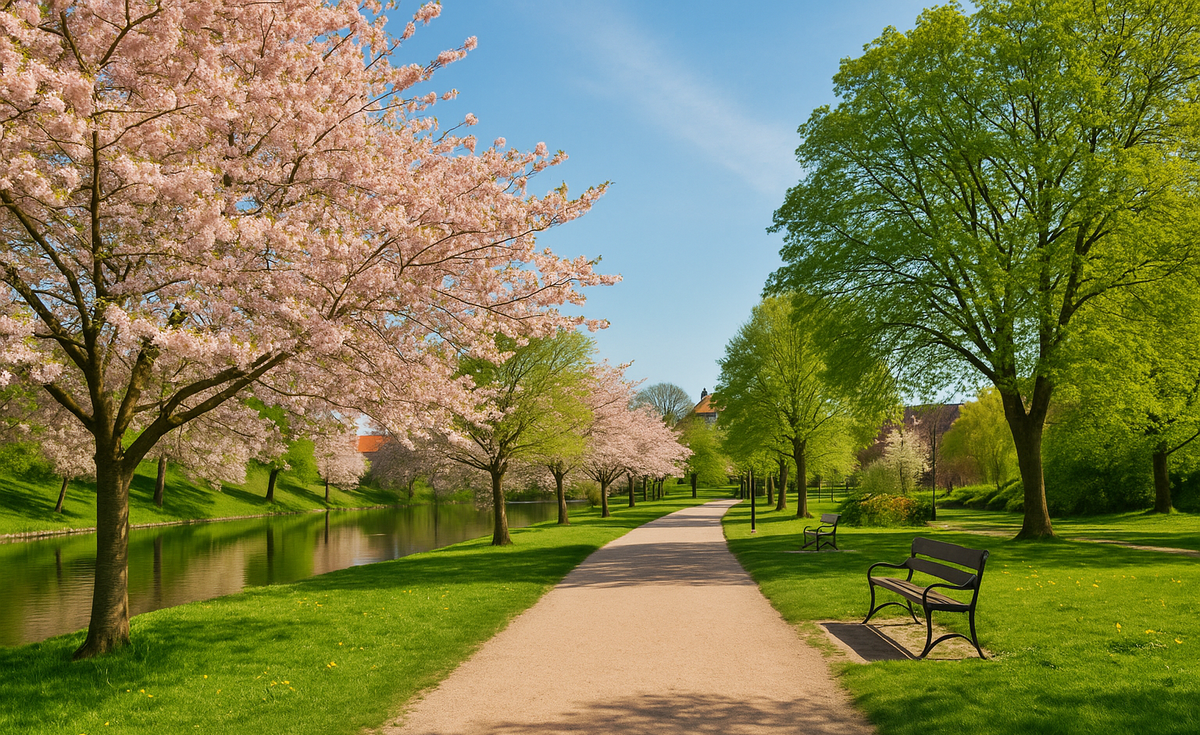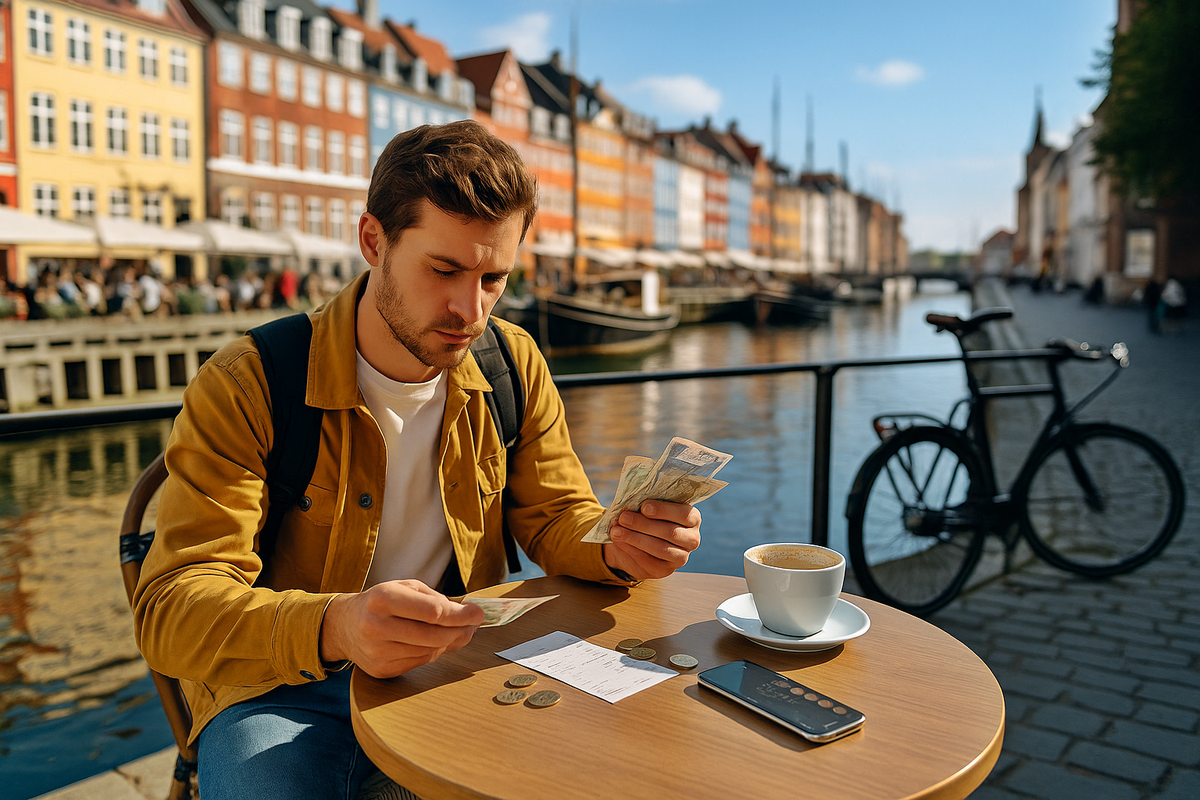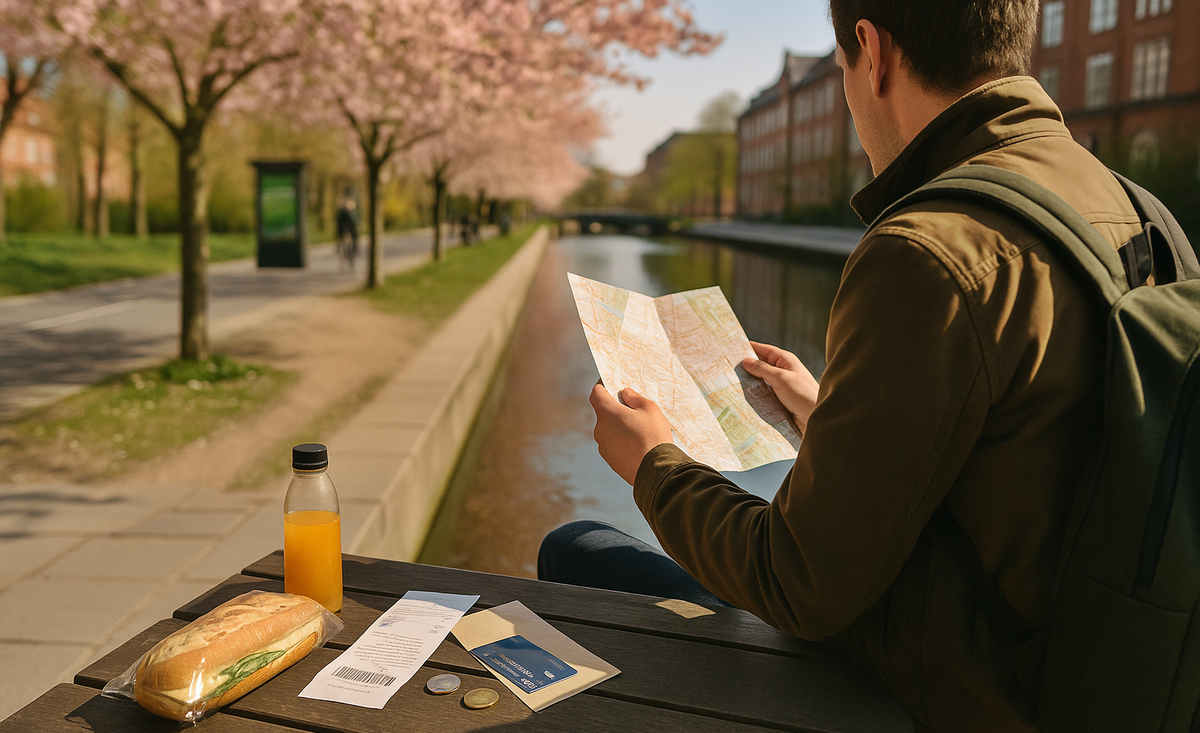🌼 Spring by month: March, April, May — when is the best time to go and how many days to take
Spring in Denmark is not one season, but three different versions of weather and mood. In March, you can still feel ‘half-winter’: wind, dampness, unstable temperatures and the feeling that spring is only on the calendar. April marks the beginning of the transition — one day it's sunshine and terraces, the next it's rain and gusty winds. May finally brings the most comfortable phase: greenery, light, street life and the feeling that ‘now it's time’.

Briefly, in terms of feelings:
- March: ‘the light is already more pleasant, but the wind is still winter.’
- April: ‘roulette: sunshine and coffee outside during the day, rain and scarves in the evening.’
- May: ‘finally comfortable to walk around all day, the parks are green, the terraces are alive.’
This article will help you choose the month and duration that suits your pace: to understand how many days to take, what you will definitely have time for and where you won't overpay.
🌤️ Weather, daylight hours and seasonality: March vs April vs May
📊 Mini ‘map’ of spring
| 📅 Month | 🌡️ Temperature and how it feels | ☀️ Daylight hours | 💬 What it means in practice |
|---|---|---|---|
| 📆 March | Cold, damp and often windy. Feels cooler than the numbers suggest. | Daylight increases quickly, but evenings are still early. | You need layers, a hat and backup plans. Long walks are not pleasant every day. |
| 📆 April | “Transition month”: there can already be warm days, but with relapses into autumn–winter mood. | Noticeably more light, you can still walk outside in the evening. | You can plan outdoor days, but always keep a plan B in reserve. |
| 📆 May | The most comfortable spring: greenery, light, terraces and parks come to life. | Long days, light evenings. | It’s fine to plan long walking routes and trips. You can already feel the start of the high season. |
🌦️ March: half winter, half spring
- Changeable temperatures, frequent winds, ranging from ‘pleasantly cool’ to ‘damp and chilly’.
- The days are getting longer, but it still feels like late winter.
- Focus: indoor activities, short outdoor breaks, lots of stops at cafés.
🌈 April: transition and sudden changes
- One day you might be walking along the embankment in a light jacket, and the next day you're hiding from the rain and wind.
- There is noticeably more light, making it more comfortable to take photos and go for walks.
- Focus: a mix of streets and museums, a flexible plan that can be rearranged according to the forecast.
🌳 May: ‘real’ spring
- The grass and trees are turning green, and the parks and embankments are filling up with people.
- Terraces and street tables are starting to operate normally, and you want to walk, not just survive.
- Demand for accommodation and tickets is growing, but there is still some time before the summer peak.
For shooting and walking days, the logic is simple:
- March — the format ‘short street sessions + lots of interiors’ works well,
- April — you can already plan full-fledged daytime walks, but with a backup plan,
- May — time for ‘long days on your feet’ and beautiful shots in parks and by the water.
⏱️ How many days to take per month

🧊 March: 2–3 days — a compact, cosy weekend
Realistic:
- 2 days — the minimum format for a first visit: the city centre, 1–2 museums, walks along the embankments and the old town on dry days.
- 3 days — a comfortable option: there is a reserve for a day with bad weather or another museum/area.
When to add +1 day:
- if you definitely want to visit Roskilde or the castles,
- if the forecast shows at least one day of heavy rain.
⛅ April: 3–4 days — a balance of streets and museums
- 3 days allow you to cover the basics: the city centre + canals, 2–3 museums, one day in the suburbs.
- 4 days give you the opportunity to either add a trip (Roskilde, castles, Louisiana) or have a full buffer for the weather and rearrange your days without stress.
🌺 May: 4–5 days — greenery, trips and a leisurely pace
- 4 days — already a good mix: 2 days for the centre and neighbourhoods, 1 day for parks/embankments, 1 day for a trip.
- 5 days — optimal for those who like to ‘live in the city’: you can keep up the pace without rushing, have time to walk around, go out of town, and have one ‘easy day’ without museums.
The general logic: the closer to May, the easier it is to extend your trip — daylight hours and comfort allow you to make the most of each extra day. In March, however, an extra day without a plan B can easily turn into ‘sitting in the hotel and leafing through the forecast.’
🗺️ Three mini-scenarios: March, April, May

☕ March (2–3 days): ‘museums + hygge’
Day 1
- Morning: national or historical museum to ‘get into’ the context of the country.
- Day: lunch at the market/food hall, a short walk through the centre and along the waterfront, if it's not raining.
- Evening: wine bar, bakery or coffee shop with dessert, view of the harbour lights.
Day 2
- Morning: Glyptotek, SMK or Designmuseum — depending on your interests.
- Day: coffee route through the city centre, bookshops, design shops.
- Evening: indoor sauna/baths or just a long dinner.
Day 3 (if available):
- Plan A: another museum/gallery + a walk around the neighbourhood (Vesterbro/Nørrebro).
- Plan B (in case of rain): ‘completely indoor day’ — two museums, a couple of coffee shops, an evening in a cosy bar.
🌤️ April (3–4 days): ‘transitional mix’
Day 1 — do this during a dry spell
- Morning/day: city centre, canals, observation decks, Nyhavn.
- Evening: dinner and a walk through the illuminated city centre.
Day 2
- Morning: one large museum.
- Day: Vesterbro or Nørrebro district — street art, cafes, concept shops.
- Evening: a bar or gastro spot in one of the districts.
Day 3
- Plan A: trip (Roskilde, castles, Louisiana), if the forecast allows.
- Plan B: another day in the city with a museum and a long walk through parks/embankments.
Day 4 (if available): Slot for rearrangement — you swap the ‘street’ and ‘museum’ days depending on the weather, without losing any content.
🌿 May (4–5 days): ‘green routes + trips’
Day 1. Centre, canals, Nyhavn, observation decks — maximum street route in good light.
Day 2. Parks and embankments: Kastellet, Østre Anlæg, Frederiksberg Have, long walking loop. In the evening — sunset by the water, terrace or street food by the embankment.
Day 3. Outing: Louisiana (art + sea) or one of the castles of Zealand. In the evening — a quiet return and a light dinner.
Day 4. Neighbourhoods (Vesterbro/Nørrebro/Østerbro), cafés, shops, local markets.
Day 5 (if there is one): A light day with no mandatory programme: revisit your favourite location, go for a bike ride or do nothing in the spirit of hygge. In case of rain: second museum day + cosy cafés/galleries.
💶 Budget and logistics: how spring affects your wallet

🏨 Accommodation and flights
- March usually offers lower prices for hotels and air tickets: demand is lower, and tourist traffic is just starting to pick up.
- April is already mid-season: Easter holidays and local events appear, and there may be ‘peaks’ on certain dates.
- May is more expensive than March/April, but almost always cheaper than the summer peak: a good balance of ‘price/comfort’.
Practical conclusion:
- if your goal is maximum savings, look at March and weekdays;
- if comfort and greenery are more important, with a slight increase in prices, May justifies the extra expense.
🚆 Maps, transport and excursions
- With 48-96 hours in the city and 2-3 paid attractions per day, it makes sense to consider city cards/travel passes — they cover museums + transport.
- If you are planning 1-2 train trips, it makes sense to check for promotions and flexible fares in advance: in case of bad weather, you can reschedule your days and not lose money.
- In April–May, weekdays are usually quieter in museums and canals than weekends: fewer people, more comfortable queues and restaurants.
💰 ‘Day indoors’ vs ‘day on foot’
- Indoor day — tickets to 1–2 museums, cafes/restaurants, transport.
- Outdoor day — more money spent on food and coffee, less on entrance tickets, but there is a risk of spontaneous purchases and ‘one more bar’.
In March, it makes sense to have at least one indoor day, in April — a hybrid, and in May, you can consciously plan more outdoor days and balance your budget by walking.
✅ Mistakes, risks and checklist before buying tickets

⚠️ Common mistakes
- Planning March like May: no layers, no plan B and with the idea that ‘we will walk a lot every day’.
- Ignoring wind and short dry windows: setting long outdoor routes on the wettest day.
- Not checking off-season windows at attractions: some attractions may be closed for renovation/restart in the spring.
- Packing the trip ‘museum to museum’ without a break — by the end of the third day, there is a risk of ‘burnout’ and the feeling that the impressions have merged into one.
📌 Risks by date
- Easter and school holidays → increased prices and crowds.
- Local festivals/events → can either enhance your trip or make hotels more expensive and restaurants crowded.
- Renovations/restarts of exhibitions in museums and amusement parks → it is important to check specific dates.
✅ Checklist before clicking ‘buy’
- Calendar of holidays and events for the selected dates.
- Opening hours of key attractions (museums, parks, castles) during this period.
- Wind and precipitation forecast for the trip (especially in March–April).
- Plan B for rain: 1–2 ready-made indoor routes with museums and cafés.
- Answer to the question: ‘Do we need +1 day?’ before departure (Roskilde/castles/Louisiana), in case of a likely ‘rainy’ day.
🧭 Mini selection matrix
- Love museums, cafés, hygge, want to save money → March, 2–3 days.
- Like a mix of streets and interiors, ready to live according to the weather → April, 3–4 days.
- Want greenery, parks, trips and long walks → May, 4–5 days.
Then you just need to be honest with yourself: how much are you willing to walk, how do you feel about wind and rain, and is saving money or comfort more important to you? This will determine which spring — March, April or May — will be ‘your’ Denmark.
❓FAQ
💡You can go in any spring month, but the format will be different. In March, it's more of a short hygge weekend with an emphasis on museums and cafes, in April — a transitional mix of street and indoor activities, and in May — full-fledged walks, parks and trips out of town without the feeling of ‘we're constantly running away from the weather’.
💡In March, it is reasonable to plan for 2-3 days: two days for the city centre + 1-2 museums and the third as a backup for bad weather or another museum/area. It only makes sense to take more days if you consciously choose a leisurely pace and are prepared for one ‘wet’ day spent almost entirely indoors.
💡April is a ‘roulette’: you can catch perfect sunny days and then immediately get a rollback to windy, rainy weather, so your plan should be flexible. May is noticeably more stable: greenery, terraces, long daylight hours, comfortable walks and trips, while prices and crowds are usually not as aggressive as in July.
💡If it's March and you're not sure about the weather, 2–3 days is enough to get a feel for the city and avoid getting stuck in the rain. In April, it's more comfortable to plan for 3–4 days so that you have time to change your itinerary, and in May, it's best to plan for 4–5 days: this way, you'll have time to see the city, the parks, and make 1–2 trips (Roskilde, castles, Louisiana) without rushing.
💡Basic kit: layered clothing, waterproof shoes, a windbreaker, a hat/scarf for March–early April, and always have a plan B ready for rain (museums, galleries, coffee shops, markets). Plus, before buying tickets, check the calendar of holidays and events, the opening hours of key attractions, and honestly decide whether you need an extra day ‘in reserve’ for departure or potentially bad weather.





0 comments
Log in to leave a comment